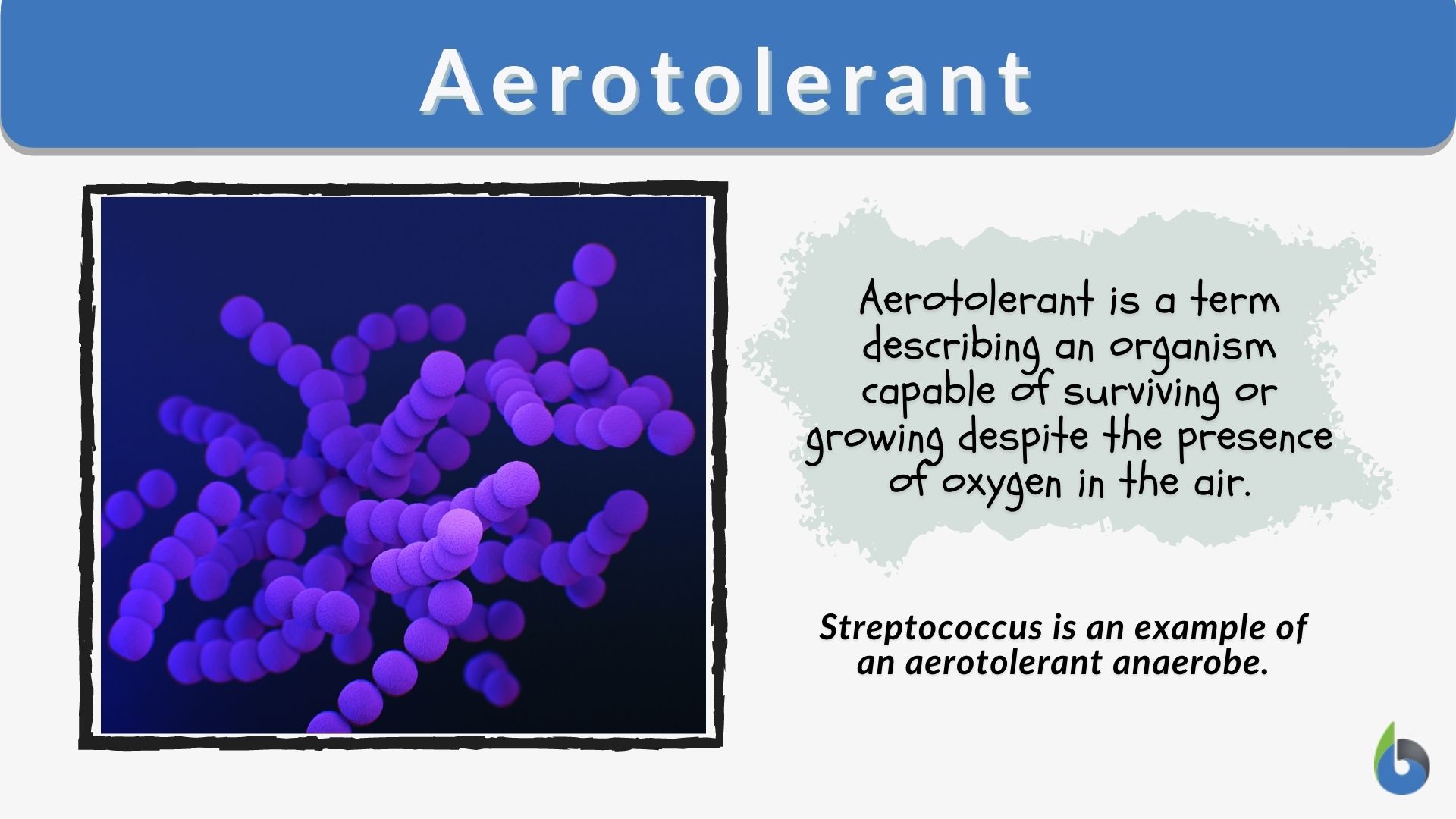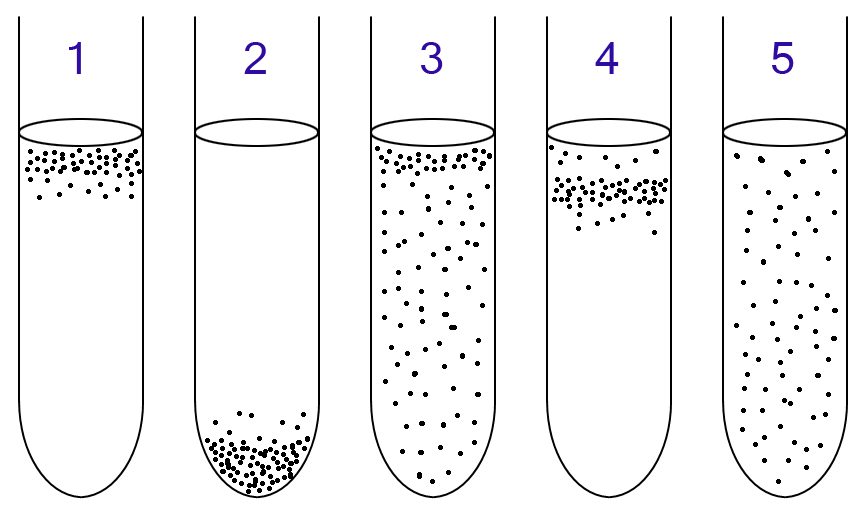
Aerotolerant bacteria are organisms that can survive in the presence of oxygen but do not use it for growth. These bacteria have developed unique mechanisms to tolerate oxygen without relying on it for their energy metabolism.
Aerotolerant bacteria play a crucial role in various ecological and industrial processes, including food fermentation, wastewater treatment, and the decomposition of organic matter. Understanding their unique biological adaptations can offer valuable insights into developing environmentally friendly technologies and potential medical applications.
We will explore the characteristics and significance of aerotolerant bacteria in different environments, shedding light on their important role in the microbial world and beyond.

Aerotolerant bacteria are a fascinating group of microorganisms that possess a unique ability to withstand the presence of oxygen in their environment. Unlike other bacteria that require oxygen for growth, these organisms are capable of surviving, even thriving, in the absence of oxygen. In this article, we will explore the characteristics of aerotolerant bacteria and delve into the role of oxygen in their growth and survival.
Aerotolerant bacteria, also known as obligate fermenters, are a class of microorganisms that are predominantly anaerobic, meaning they can survive and reproduce in the absence of oxygen. Despite this, they can tolerate the presence of oxygen and can also withstand exposure to atmospheric air. Here are some key characteristics of aerotolerant bacteria:
While aerotolerant bacteria do not require oxygen for their survival, the presence of oxygen can still have an impact on their growth and metabolism. Despite being able to tolerate oxygen, they prefer low-oxygen environments due to their unique metabolic pathways. Here’s a closer look at the role of oxygen in aerotolerant bacteria:
| Role of Oxygen | Impact on Aerotolerant Bacteria |
|---|---|
| Oxygen as an electron acceptor | Aerotolerant bacteria do not utilize oxygen as an electron acceptor during metabolism, relying instead on other compounds. |
| Oxygen toxicity | While aerotolerant bacteria can tolerate oxygen, high levels of this gas can still be toxic to their growth and survival. |
| Oxygen availability | Aerotolerant bacteria thrive in environments with low oxygen levels, such as the intestines of humans and animals. |
Overall, aerotolerant bacteria represent a fascinating group of microorganisms that have adapted to survive in environments where oxygen levels can vary. By understanding their unique characteristics and the role of oxygen in their growth, we can gain valuable insights into the diverse world of microorganisms and the intricate relationships they form with their hosts.
Aerotolerant organisms have unique adaptation mechanisms that allow them to thrive in oxygen-rich environments. These mechanisms enable these organisms to survive and grow in the presence of oxygen, even though they do not utilize it for energy production. Understanding these adaptation mechanisms can provide valuable insights into the metabolic strategies and fermentation pathways that aerotolerant organisms utilize.
Aerotolerant organisms employ specific fermentation pathways to generate energy in the absence of oxygen. These pathways involve the breakdown of organic compounds, such as sugars, into simpler molecules, with the concomitant production of energy in the form of ATP. The fermentation pathways utilized by aerotolerant organisms are tailored to operate efficiently in anaerobic conditions, allowing them to thrive in environments where oxygen levels are low.
The metabolic strategies employed by aerotolerant organisms are finely tuned to ensure efficient utilization of available resources. These organisms have evolved metabolic pathways that enable them to effectively process and metabolize a wide range of substrates, including carbohydrates, proteins, and lipids. By optimizing their metabolic strategies, aerotolerant organisms can adapt to diverse environmental conditions and utilize available nutrients to support their growth and proliferation.
Aerotolerant bacteria play a crucial role in various ecological processes, contributing to the balance and sustainability of natural environments. The ability of these bacteria to survive in oxygenated and oxygen-limited conditions has widespread implications for different habitats and their interactions with other microorganisms.
Intriguingly, aerotolerant bacteria can thrive in diverse habitats, including the digestive tracts of animals, soil, and water environments. They are often found in oxygen-poor regions of these ecosystems, such as deep layers of soil and sediment, where they exhibit resilience to oxygen exposure.
Aerotolerant bacteria contribute to the intricate web of interactions within microbial communities. They coexist with other microorganisms, sometimes forming symbiotic relationships or competing for resources. For instance, they can influence the microbial balance in the gut microbiota, impacting digestion and overall health.
Aerotolerant bacteria possess a unique set of characteristics that make them valuable in a variety of applications. Their ability to survive and thrive in both aerobic and anaerobic environments makes them incredibly versatile. Let’s explore some of the potential applications of aerotolerant bacteria.
Aerotolerant bacteria have shown great promise in bioremediation efforts. These bacteria have the ability to break down and remove pollutants from contaminated environments. For example, they can degrade organic compounds such as petroleum hydrocarbons, pesticides, and industrial solvents that contaminate soil and water sources.
One of the key advantages of aerotolerant bacteria in bioremediation is their ability to function in oxygen-depleted environments. This means that they can effectively degrade pollutants in anaerobic regions, such as deep within soil or sediment, where other bacteria would struggle to survive.
Researchers have also discovered that certain strains of aerotolerant bacteria can detoxify heavy metals, such as mercury and lead. This ability is particularly useful in cleaning up industrial sites where heavy metal contamination is a significant concern.
In summary, the unique capabilities of aerotolerant bacteria make them valuable in bioremediation efforts, enabling the removal of various pollutants from contaminated environments.
Aerotolerant bacteria have found numerous applications in the industrial sector. Due to their ability to function in oxygen-depleted environments, these bacteria are commonly utilized in the fermentation processes for the production of various industrial products such as ethanol, lactic acid, and hydrogen gas.
Additionally, aerotolerant bacteria are being explored for their potential in the production of biofuels. Their ability to efficiently convert a wide range of substrates, such as agricultural waste and cellulosic biomass, into biofuels makes them an attractive option for a renewable energy source.
Another industrial application of aerotolerant bacteria is in the production of enzymes. These bacteria can produce a variety of enzymes, including amylases, lipases, and proteases, which are widely used in the food, textile, pharmaceutical, and detergent industries.
In summary, aerotolerant bacteria play a key role in various industrial processes, including fermentation, biofuel production, and enzyme synthesis, making them important contributors to sustainable and eco-friendly manufacturing practices.
Aerotolerant bacteria pose unique challenges and opportunities for research in the field of microbiology. Exploring uncharted territories and leveraging technological advancements offer promising avenues for further understanding this resilient group of microbes.


Aerotolerant means the ability to survive in the presence of oxygen, without needing it for growth.
Aerotolerant anaerobes can tolerate the presence of oxygen, while facultative anaerobes can survive with or without oxygen. They both have different abilities to handle oxygen, with aerotolerant anaerobes being less affected by it.
Aerotolerant bacteria can tolerate oxygen but don’t use it for growth. Microaerophilic bacteria need low oxygen levels to thrive.
Aerotolerant bacteria thrive in anaerobic environments, such as the tube commonly used for their cultivation.
Aerotolerant organisms have the remarkable ability to survive and even thrive in oxygen-rich environments. Their resilience to high levels of oxygen makes them unique and intriguing. Understanding the mechanisms behind their aerotolerance could unlock valuable insights into the evolution and adaptation of life forms in various ecological niches.
As scientists continue to explore the fascinating world of aerotolerant organisms, we can expect to uncover even more incredible discoveries and shed light on the complex interplay between life and oxygen.